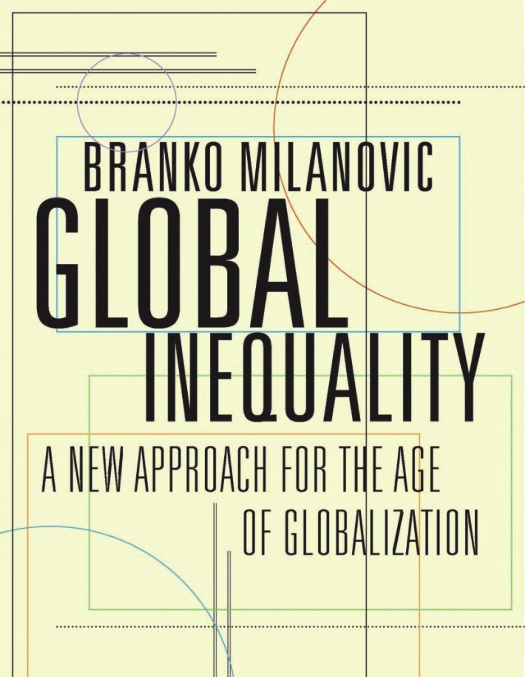Milanovic’s Global Inequality may be a relatively old news by now. Yet, published in 2016, the book is still relevant as it anticipates many developments that we are observing today, such as the popular backlash against the inability of Western political elites to cope with growing inequality as well as the growing attraction of “political capitalism” that seemingly produces higher growth rates. These are the themes Milanovic deals with in his latest book, Capitalism, Alone.
But this latest book (which I intend to review in the very near future) cannot be properly understood and conceptualized without appreciating the challenge of inequality – Milanovic’s starting point in his latest book which he so ably explains in Global Inequality. As is clear from the title, the book deals with inequality but focuses on its global dimension, both spatially and temporally. The book has an important message: to be properly understood, inequality must be decomposed into its elements and analyzed from various vantage points, echoing the point made by Jervin in his Africa with respect to development statistics in general. Furthermore, there are many ways to understand and describe inequality in addition to the two most commonly used, the Palma ratio and the Gini coefficient. There is a theoretically interesting and useful development of the Kuznets hypothesis into the Kuznets wave (akin to the Kondratieff’s cycle) with humps and troughs determined by the malign and benign forces affecting inequality. Importance of the book is also in flagging the complex nature of inequality and its consequences, not only nationally (as Joseph Stiglitz did in his Price of Inequality) but also globally.
Uganda, again, presents a case of fast growing inequality: Its Palma ratio (the ratio of the richest 10% of the population’s share of GNI divided by the poorest 40%’s share) has stagnated over the past 20 years while increasing in the past 5. The Gini coefficient has been on the rise increasing from 0.365 in 1992/93 to 0.426 in 2009/10 and to 0.47 in 2014. Furthermore, regionally (compared with Rwanda, Kenya, Tanzania and Ethiopia) Uganda has the fastest rate of inequality growth. If this doesn’t change, Uganda may have the highest regional inequality rate in 10 years or so (currently, it is faring somewhat better than Rwanda and Kenya but worse than Tanzania and Ethiopia). Given our corporate focus on reducing inequalities, it is important to integrate this dimension in our programs, not just in their generic design but also adjusting to the particular circumstances of our partner countries (remembering that the best practice paradigm is a fallacy, according to Jervin).
Milanovic also warns against forecasting the future as a futile exercise: the author points out that not only forecasts overwhelmingly fail to predict or even imagine the most important future development but they generally consist of simple extensions of current trends (no wonder because the immediate past is the best predictor of the future but the further the future, the less reliable is the forecast based on the immediate past). And yet, the author attempts some very cautious reflection on the future of inequality during this century. There are many “ifs” and only one unequivocal statement: the gains from globalization will not be evenly distributed and more inequality can be expected in the future. This is a very sobering reply to those (like Paul Mason in his Postcapitalism) who believe in capitalism’s smooth transformation into a more equal and just society just by itself through a “creative class”.
What Milanovic leaves outside the parentheses of his discussion though is the relationship between capitalism and inequality. Marx believed that capitalism inevitably generates growing inequality between the bourgeoisie and the rest of the population. In a system where capital exists (and develops) by hiring wage labor, capitalists would aspire to keep wages or labor cost as low as possible in a bid to maximise their profitability. Marx further believed that the decreasing rate of profit under capitalism will further press capitalists into ever-progressing minimization of labor costs resulting in general pauperization. The capitalist development in the West and emergence of welfare states in the 1950s-80s seemed to refute this grim perspective. This phenomenon was hailed as a proof of capitalism’s adaptive capacity and groundlessness of Marxist critique of capitalism.
Yet, the past 30 years of capitalist development have stymied or even reversed the gains of the middle and working classes, most notably in the United States but also in all other major Western economies. What if the trend of the “glorious trente” was just an aberration from the otherwise unstoppable march of capitalism on the rights of non-capitalist classes towards greater inequality embodied in the government of 1%, by 1%, for 1% (to use Joseph Stiglitz metaphor)? Milanovic doesn’t give a clear answer to this question. But if growing inequality is a structural and systemic issue inherent in the capitalist system, the hopes for ‘reversal’ of capitalism towards a more humane version of it which existed some 30-40 years ago are just empty hopes.
